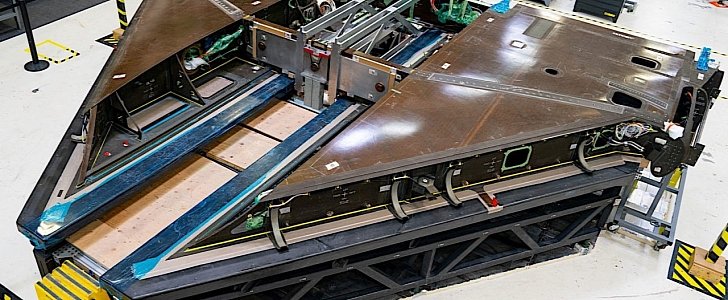Richard Branson’s space-faring company, Virgin Galactic, is on a roll. At the end of last year, its ship VSS Unity reached the edge of space with humans on board, a significant investment was announced earlier in July, and the first tourist flight is just around the corner.
Things are going so great in fact that the company is already working on a second ship.
That's how Virgin calls it, second ship, but technically the machine now being assembled by the company’s manufacturing arm is the third in line. The first one, VSS Enterprise, crashed in 2014 as a result of pilot error, leaving only the Unity in operation.
Earlier this week, Virgin announced the wing of this new spaceship is almost ready, having completed the systems installation and main structure build. Up next is mating the wing with the fuselage, finishing up and then test flights can begin.
No details about the capabilities of the new spacecraft were provided, but they will probably be not unlike the ones of the ship currently in operation.
VSS Unity launches horizontally at 50,000 feet (15 km) from the underbelly of a two-bodied carrier aircraft. This way, the ship circumvents the denser regions of the atmosphere and the pull of Earth’s gravity, saving fuel and money.
In December 2018, the ship reached an altitude of 51.4 miles (82.7 km), crossing the border into space while carrying three people. That flight was “the first human spaceflight to be launched from American soil since the final Space Shuttle mission in 2011.”
When all testing is completed, both the Unity and the ship currently being built will fly private citizens into space in exchange for $200,000. The price of the ticket includes pre-flight medical checks and pre-flight training.
The entire experience will not last more than two hours, only six minutes of which would be spent in actual zero gravity.
Things are going so great in fact that the company is already working on a second ship.
That's how Virgin calls it, second ship, but technically the machine now being assembled by the company’s manufacturing arm is the third in line. The first one, VSS Enterprise, crashed in 2014 as a result of pilot error, leaving only the Unity in operation.
Earlier this week, Virgin announced the wing of this new spaceship is almost ready, having completed the systems installation and main structure build. Up next is mating the wing with the fuselage, finishing up and then test flights can begin.
No details about the capabilities of the new spacecraft were provided, but they will probably be not unlike the ones of the ship currently in operation.
VSS Unity launches horizontally at 50,000 feet (15 km) from the underbelly of a two-bodied carrier aircraft. This way, the ship circumvents the denser regions of the atmosphere and the pull of Earth’s gravity, saving fuel and money.
In December 2018, the ship reached an altitude of 51.4 miles (82.7 km), crossing the border into space while carrying three people. That flight was “the first human spaceflight to be launched from American soil since the final Space Shuttle mission in 2011.”
When all testing is completed, both the Unity and the ship currently being built will fly private citizens into space in exchange for $200,000. The price of the ticket includes pre-flight medical checks and pre-flight training.
The entire experience will not last more than two hours, only six minutes of which would be spent in actual zero gravity.




